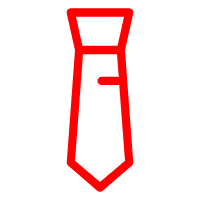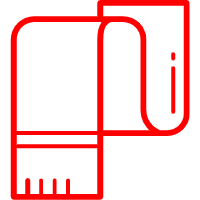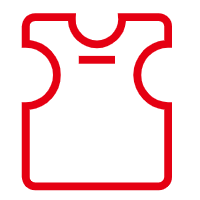YiLi tie is a necktie manufacturer in Shengzhou, China; we provide high-quality neckties to customers worldwide. This article details the process from receiving customer inquiries to completing our necktie production.
Designers need to be familiar with the necktie production process and provide necktie designs that are more in line with production. Buyers understand the necktie production process and can better control the quality and delivery time.
If you are not familiar with necktie structure, you can read: The Necktie Structure Anatomy
Tie Design
After receiving customer consultation, our designers will redesign according to the design drawings or physical samples provided by customers, according to our machine needles, to ensure that our machines can produce your necktie.
Necktie color matching
1.The necktie design Pantone color number or physical sample provided by the customer.
2.The colorist finds the corresponding color on the color card of the yarn warehouse according to the color matching requirements of the customer. Our company's yarn is rich in color and has thousands of different colors.
3.The designer uses the computer to simulate the color matching to see the renderings
4.If the color of the renderings meets the requirements, the physical proofing on the machine. Samples will be confirmed with customers by pictures or express delivery.
Suppose the color provided by the customer is different from the one on our yarn color card. In that case, our salesman will communicate with the customer directly and offer the following two solutions:
1.Use our existing approximate color replacement. This way, we can complete the customization with only 50 PCS neckties.
2.Dye the yarn according to the customer's color. This way, the amount of single-color yarn needs to reach 20 kg because the dyeing factory will charge additional labor costs for less than 20 kg.
Necktie fabric weaving
Step1: Yarn preparation
After the customer confirms the color sample, our merchandiser will hand over the production process sheet to the factory manager of the weaving workshop. The factory manager selects the existing yarn or customizes the yarns according to the process sheet. If the yarns are customized, it will add about two weeks of production time, which is determined by the dyeing process of the yarns.
Step2: Fabric weaving
We use a jacquard machine to weave our fabrics, and the pattern will weave with different colored yarns. The vertical direction is called "warp yarn," and the yarn in the moisture direction is called "weft yarn." The same color (red, navy, black, white, etc.) "warp yarns" is used for the entire jacquard machine, and changing colors is very time-consuming because each device has 14,440 or 19,260 warp yarn. The color change of "weft yarns" is very accessible; it determines the pattern design of a necktie. Designers can choose up to 8 different colors of weft in one necktie design.
Step3: Embryo fabric inspection
When the fabric is complete, the worker inspects items such as pattern color, pattern size, pattern block, etc., according to the actual samples on the process sheet. Wash away stains from the fabric to keep it clean.
Step4: Fixed color
through special processing, The fabric's color will not fade due to sunlight, chemical reaction, washing, etc.
Step5: Final processing
The fabric is processed through a unique process, becoming bright and flat, with no wrinkles. The fabric is Suitable for necktie production.
Step6: Mature Fabric inspection
When the fabric finishes Final processing, it will use for necktie production. The mature fabric needs an inspection to ensure its quality has fully met the requirements of necktie production. The inspection requirements are based on the raw embryo inspection and add the following essential points:
ü Whether the fabric is flat without creases
ü Whether the fabric is weft oblique
ü Whether the color is the same as the original
ü Pattern size check, etc.
Necktie production process
Step1: Fabric Cutting
1.Draw cut template
The cutter draws a cutting template before cutting to ensure the cutting size of the necktie. The cutting direction of the necktie is at an angle of 45 degrees to the fabric, which can prevent the finished necktie from twisting like a twist.
2.Spread the fabric
Before cutting, The cutter master will spread the fabric layer by layer on the workbench; the cutting template will be covered on the fabric and fixed with heavy objects and clips, then the cutter trims the four sides to make it flat.
3.cut fabric
The cutter will move along the lines drawn on the cutting template, and the cutter master will cut the necktie parts individually. To ensure the cutting quality, the company stipulates that the number of cutting neckties in a single time shall not exceed 5,000.
Watch via our YouTube: More necktie production process>>
Step2: Necktie Parts Inspection
In this step, we need to complete the following checks:
ü The surface of the parts is intact, with no damage, no stains, no wrinkles, and no small defects.
ü If it is a LOGO necktie, it is important to measure the height of the LOGO position.
Step3: Sew Tipping
Tipping will sew on both ends of the necktie. The blade, the tail, and the neck will be sewn together, with the seam at a 45-degree angle.
Step4: Ironing Tipping
Insert a fixed-shaped iron piece between the necktie fabric and the tipping, and the edges of both ends of the necktie will be ironed to shape. Our production standard is that the tipping edge and the necktie edge are parallel; the tips of both the necktie and tipping are at a 90-degree angle.
Step5: Tipping Inspection
Tipping inspectors should focus on the following items:
ü Check whether the sharp angles at both ends of the necktie size are 90 degrees.
ü The washing mark is correct.
ü Measurement of necktie length.
ü Quantity check.
Step6: Sewing neckties
We have machine and manual sewing tow methods to suit different order quantities and customer requirements.
Hand-Sewing: When the number of neckties is small, or the necktie has a logo. We will use hand-sewing to sew neckties. The specific operations are as follows:
1.The interlining is tucked into the tipping at both ends of the necktie.
2.The fabric folds along the edge of the interlining. Then worker uses a needle to fix the fabric overlap place. Finally, steam iron the necktie edge to shape. Repeat the above operations until the entire necktie is finished.
3.During this process, they fixed the Keeper loop at 10 feet (25cm) from the blade's tip for workers to finish sewing.
4.Remove the needles on the necktie one by one, and at the same time, complete the sewing with a thread running through the entire necktie.
5.The hand sewing worker completes the sewing of the keeper loop and Logo label according to the craft sheet.
6.The hand sewing worker completes the bar tack according to the craft sheet.
Machine sewing: When a customer orders thousands of identical neckties, we will use machine sewing neckties. Machine sewing has faster production efficiency and uniform product quality, but it will increase the two-step production process. The specific operations are as follows:
1.After Tipping Inspection, the worker lies the necktie fabric and interlining flat on the machine, then the device will automatically complete sewing the middle area (about 70%) of the necktie.
2.The worker uses the necktie turning machine to turn over the whole necktie.
3.The ironing worker inserted a fixed triangle iron plate into the necktie at both tips, then steam iron to shape the whole necktie.
4.The hand sewing worker sews the remaining 30% of the necktie according to the requirements of hand sewing.
5.The hand sewing worker completes the sewing of the keeper loop and Logo label according to the craft sheet.
6.The hand sewing worker completes the bar tack according to the craft sheet.
Step7: Finished product inspection
The inspector must inspect the following steps:
ü Whether the Care & Origin tag of the finished necktie is consistent with the craft list
ü Measurement of the size of each necktie according to the craft list
ü Check the distance of hand sewing stitches.
ü Treatment of necktie crease, etc.
ü Inspection length of the slip stitch.
5. Finished product packaging
Step1: Needle inspection
Finished neckties need needle inspection before packaging to ensure no needle residue and the safe use of neckties. The operation steps are as follows:
1.The inspector puts the necktie into the needle inspection machine for testing.
2.The necktie has metal needles left if the machine lights up red. At this time, the inspector should dispose of the problem necktie's needle and then re-inspect until the red light is no longer on.
3.All necktie needle inspections passed.
Step2: Package
The packer packs according to the requirements on the process tracking sheet, checks the quantity into the carton, and seals the carton.
According to customer needs, we can provide different kinds of packaging:
For retail customers, we offer a variety of neckties gift boxes.
We use standard necktie packaging and optimal packaging design for wholesale customers to save shipping costs.
Shipping
The warehouse administrator completes the delivery according to the location and the delivery date required by the process sheet.
Summarize
The necktie construction looks simple, but it is challenging to produce a high-quality necktie. Our factory needs to go through 23 production processes, large and small. Each process has work instructions to standardize workers' operations and improve the quality of necktie production. Six inspections are in the production process to ensure the quality and safety of neckties.
Follow us to learn more about neckties.
And finally, please remember If you want to purchase neckties, please get in touch with us.
Post time: Aug-04-2022




